
DeSantis lays off a third of his campaign staff as presidential bid sputters
Florida Gov Ron DeSantis’s presidential campaign laid off a third of its campaign staff as it continues to tighten its belt amid numerous negative news stories and lacklustre fundraising numbers, Politico reported. The campaign will cut a total of 38 jobs, advisers told Politico, including 10 event planning roles the campaign announced weeks ago as well as that of top DeSantis advisers Dave Abrams and Tucker Obenshain. The latter two will advise a pro-DeSantis outside group. “Following a top-to-bottom review of our organisation, we have taken additional, aggressive steps to streamline operations and put Ron DeSantis in the strongest position to win this primary and defeat Joe Biden,” campaign manager Generra Peck said in a statement. “Gov DeSantis is going to lead the Great American Comeback and we’re ready to hit the ground running as we head into an important month of the campaign.” The slim-down comes after the DeSantis campaign announced it had raised $20m in the governor’s first quarter as a candidate. But the campaign had also spent $7.8m in its first quarter, an incredibly high burn rate. Many of the donors who had contributed had given the maximum legal limit, meaning they cannot donate again. As of the end of June, the DeSantis campaign had more than 90 staffers. Politico previously reported that the DeSantis campaign had admitted to donors at a Utah retreat that it had spent too much money. Mr DeSantis has failed to gain momentum in the Republican presidential nomination since he announced in May. A new poll from Fox Business showed that Mr DeSantis now trails former South Carolina governor in the state while he trails former president Donald Trump in Iowa. The governor had previously let go of roughly a dozen staffers amid the bevy of negative headlines and weak fundraising numbers. Read More Trump news – live: Georgia grand jury could weigh conspiracy charge as ex-NYPD boss hands docs to Jan 6 probe Who is Jack Smith? The ex-war crimes prosecutor who is coming for Trump
2023-07-26 02:47

Watch: Jill Biden meets France’s first lady to celebrate US rejoining Unesco
Jill Biden met France’s first lady Brigitte Macron on Tuesday, 25 July, as she visited Paris to mark the United States’ official re-entry into United Nations Educational, Scientific and Cultural Organisation (Unesco). The US First Lady will attend a flag-raising ceremony to celebrate the re-entry into the agency after a five-year hiatus. She is expected to make a speech about the importance of American leadership in preserving cultural heritage. Under Donald Trump’s administration, the US pulled out of Unesco because of an alleged anti-Israel bias and a need for “fundamental reform” in the agency. It was the second time the US returned to Unesco after withdrawing, after previously leaving under Ronald Reagan’s administration in 1984 citing alleged advancement of Soviet interests, mismanagement, and corruption. The nation announced its intention to rejoin the agency in June 2023 before the agency’s 193 member states approved re-entry. Today’s ceremony will feature a speecy by Unesco’s director general Audrey Azoulay. Read More First Lady Jill Biden to mark US reentry into UNESCO with flag-raising ceremony in Paris Oui, oui: Jill Biden heads to Paris to help mark US return to UN educational and scientific agency Jill Biden welcomes proposal for Medicare to pay for navigation services for cancer patients
2023-07-25 17:47

American Ferrera's Barbie speech has so many unused versions
'Barbie' star America Ferrera delivered her speech in a lot of different ways.
2023-07-25 15:28

Carlee Russell – latest: 'Kidnap victim' admits to lying about abduction and toddler in distress
Carlee Russell’s story about being abducted after stopping at the side of a road to help a distressed toddler was a lie, her lawyer has said in a statement. The 25-year-old from Alabama told police she was kidnapped after stopping to help a toddler in diapers who was walking alone on Interstate 459 on the evening of 13 July. She came back home two days after the alleged abduction. Her family had stuck by her story, even after police publicly expressed scepticism. However, Hoover Police Department Chief Nicholas Derzis on Monday said Ms Russell’s attorney, Emory Anthony, had now provided a statement on Monday saying there was no kidnapping The statement in part read: “There was no kidnapping on Thursday July 13. My client did not see a baby on the side on the road.” Earlier CrimeStoppers walked back a pledge to return almost $63,000 in donations to help find Carlee Russell after the 25-year-old’s kidnapping story fell under suspicion. More than $63,000 was raised during the two-day search for the Alabama woman. But the organisation that offers anonymous tips about criminal activity now said the money will not be returned after initially making the promise. Read More Carlee Russell admits she was never kidnapped, Alabama police say Carlee Russell sent several bizarre tweets before disappearing Boyfriend of Carlee Russell deletes social media posts after police cast doubt over her kidnapping story Police doubt Carlee Russell’s kidnapping claims. Could she face consequences?
2023-07-25 08:23

Carlee Russell sent several bizarre tweets before fake ‘disappearance’
Before 25-year-old Carlee Russell went missing for a mysterious 49 hours – a disappearance, she admitted on Monday, that was staged – she posted a series of bizarre tweets. On the day she went “missing” on 13 July, she tweeted at 8.55pm: “today was a GREAT day God be looking out im telling you!!” One minute later, Ms Russell wrote: “someone to tell you ‘i love you’ and don’t got a reason.” Finally, she tweeted, “yeah i want a family now” at 9.19pm. Just moments later, around 9.30pm, the Alabama woman called 911 and told detectives that she was following a lost toddler along the interstate. After she returned home, Ms Russell claimed was abducted by a man with “orange hair,” before escaping. She later turned up on foot at her parent’s home with $107 tucked in her right sock, and alleged she had barely survived the encounter. Her tweets, in combination with her search history prior to her vanishing, raised doubts about the Alabama woman’s story. Police revealed that Ms Russell’s internet search history gave hints she could have staged her own kidnapping, as she looked up Amber Alerts, the movie Taken, booking a bus ticket from Birmingham to Nashville and “how to take money from a register without being caught.” A tweet on 10 July adds colour to this complicated picture, and indicates potential problems in her relationship. Ms Russell wrote, “I always say one thing i WONT do is stay with someone who cheated on me like you went and had sex with someone else and think it’ll be sweet one day?? hellll no.” Days earlier, she also tweeted: “everyone wants to feel wanted.” Her boyfriend, Thomar Latrell Simmons, had posted on Facebook upon Ms Russell’s miraculous return, and supported her story that she had been abducted. She had been “fighting for her life for 48 hours,” he wrote, but has since taken down the post. Two days earlier, her tweet revealed she may have been unhappy at work: “my job is really starting to get on my dang nerves.” She worked at Woodhouse Spa, the owner of which said on Thursday that he provided the police with “everything we uncovered.” According to the New York Post, Ms Russell tweeted on 19 July, “I’m thankful I know how to identify when the enemy coming for me now, makes life a lot easier.” But the post has been taken down. Police began expressing their doubts last week, saying Wednesday they were “unable to verify” most of Ms Russell’s claims regarding the events leading up to and during her disappearance. Read More Carlee Russell – latest: Confusion reigns over ‘kidnapping’ case after missing woman’s search history revealed Carlee Russell claimed she was kidnapped by a man with orange hair. Police say they can’t verify any of it Carlee Russell’s internet searches suggest she staged her own kidnapping, Alabama police say
2023-07-25 07:52
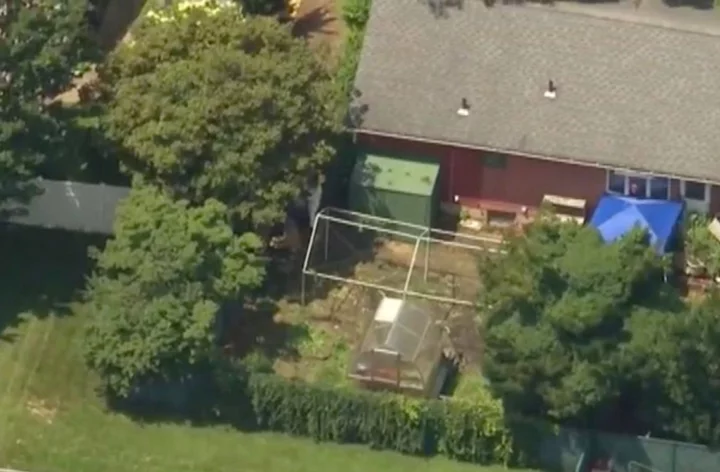
Excavator spotted digging at Gilgo Beach serial killer suspect’s home amid reports of ‘sound-proofed basement’
Investigators have been spotted digging up the backyard of Rex Heuermann’s home amid reports that the Gilgo Beach serial killer suspect may have killed at least one victim inside a soundproof room in his basement. Search teams carried out what was described as a “major excavation” on Sunday at the one-storey home in Massapequa Park, Long Island, where the 59-year-old architect lived with his wife and two adult children. In addition to digging up Mr Heuermanns’ backyard, investigators looked in a walking vault with a “big iron door.” Cadaver dogs and a ground-penetrating radar machine were brought in to scour the ground before excavators were seen digging up the earth with a backhoe. At one point, a huge wooden deck was dismantled and a blue tent was erected to shield the search from view. A neighbour told The New York Post on Sunday that authorities had found a sound-proofed room in the basement of the home and that Mr Heuermann is believed to have killed at least one of his victims down there. “He’s got a soundproof room in his basement,” Robert Musto, a 64-year-old longtime neighbour said he had been told by law enforcement on the scene. “What do you think that was for? They’re saying there’s evidence he killed at least one of the girls down there. “The cops are going to dig all that out. Said they’re focused on the soundproof room in the basement but they’re going to look at everything.” A former coworker confirmed the existence of a soundproof basement room to the paper, claiming that the accused serial killer once took time off work in order to carry out the bizarre construction of the vault in his family home. The individual, who was not named, recalled Mr Heuermann building the concrete-lined vault which is around two to three feet thick. “It’s not just a hidden room – it’s a serious vault,” they said. “It had a huge heavy-duty safe door. He went and poured new concrete walls, massive amount of concrete to encase this room. It was maybe 2 or 3 feet thick.” New York officials have not confirmed the existence of the sound-proofed basement room or publicly said that they believe Mr Heuermann may have killed one or more victims in the room. However, officials are probing the possibility that the accused serial killer killed the victims inside his family home. His wife and two children were out of town at the time of each of the three murders he is charged with. Law enforcement sources previously told CNN that a vault of some sort had been located in the basement of the Massapequa Park home – and that a trove of up to 300 firearms had been found inside. The married father-of-two had 92 legal gun permits and was a keen hunter, according to police. In the 11 days since Mr Heuermann was arrested in connection to the infamous serial killer case, investigators have been searching for evidence tying him to the murders including any trophies taken from the victims. As well as extensively searching his home, officials are probing other locations connected to the accused murderer including storage units two miles away in Amityville. Meanwhile, law enforcement agencies are also looking into unsolved murders and missing persons cases all across America including in Las Vegas, South Carolina and Atlantic City. Over in South Carolina, Chester County Sheriff’s Office said that they were looking for evidence to assist New York officials. “The Chester County Sheriff’s Office was requested by the Gilgo Beach Task Force to assist in gathering evidence in Chester County relevant to their investigation,” the department tweeted. Mr Heuermann owns a property in Chester next to his brother Craig. The pickup at the centre of the murder investigation was seized from his brother’s home last week. Mr Heuermann was arrested on the night of 13 July when a team of officers swooped as he left his office in Midtown Manhattan where he ran an architecture business. He was charged with three counts of murder in the first degree and three in the second degree over the deaths of Megan Waterman, Melissa Barthelemy and Amber Costello. He is also the prime suspect in the murder of Maureen Brainard-Barnes – who together with the three is known as the “Gilgo Beach Four” and was last seen alive in early June 2007 in New York City. The four women were found within one-quarter mile of each other, bound by belts or tape and some wrapped in burlap – their bodies dumped along Gilgo Beach. He has pleaded not guilty to the charges and is being held without bond. Court records show that Mr Heuermann was linked to the killings through a pimp’s tip about his pickup truck, a stash of burner phones, “sadistic” online searches, phone calls taunting victims’ families, his wife’s hair found on the victims’ bodies – and a pizza crust. The first piece of the puzzle came when a witness in the Amber Costello case revealed details about a vehicle that a client was driving when she was last seen alive. Costello, who worked as a sex worker, was seen alive on the evening of 2 September 2010 when she left her home in West Babylon. A witness said she had gone to meet a client who was driving a first-generation Chevrolet Avalanche. Last year, a registration search showed that local man Mr Heuermann owned a first-generation model of the truck at the time of Costello’s disappearance. He also matched the witness’ description of the man believed to be the killer: a large, white “ogre”-like male in his mid-40s, around 6’4’ to 6’6” tall, with “dark bushy hair,” and “big oval style 1970’s type eyeglasses”. The discovery of the car led investigators to hone in on Mr Heuermann including executing 300 subpoenas, search warrants and other legal processes to obtain evidence to determine his potential involvement in the killings. Among this was Mr Heuermann’s alleged use of burner phones, with prosecutors saying that he used burner phones to contact the three women and arrange to meet them at the time when they went missing. He also allegedly took two of the victims’ cellphones – and used one to make taunting phone calls to one of their families where he boasted about her murder, court documents state. Mr Heuermann’s DNA was found on one of the victims, while his wife’s hair was found on three of the four women he is connected to. His arrest comes after the horrific serial killer case has captured the nation’s attention for more than a decade. The Gilgo Beach murders had long stumped law enforcement officials in Suffolk County who believed it could be the work of one or more serial killers who targeted sex workers and dumped their bodies along the remote beaches on Ocean Parkway. The case began in May 2010 when Shannan Gilbert vanished after leaving a client’s house on foot near Gilgo Beach. She called 911 for help saying she feared for her life and was never seen alive again. During a search for Gilbert in dense thicket close to the beach, police discovered the remains of another woman. Within a matter of days, the remains of three more victims were found close by. By spring 2011, the remains of a total of 10 victims had been found including eight women, a man, and a toddler. Police have long thought that it could be the work of one or more serial killers. Gilbert’s body was then found in December 2011. Her cause of death is widely contested with authorities long claiming that it is not connected to the serial killer or killers but that she died from accidental drowning as she fled from the client’s home. However, an independent autopsy commissioned by her family ruled that she died by strangulation and her mother believes she was murdered. Like Gilbert, most of the victims targeted were sex workers while some are yet to be identified. Read More More families await answers in Gilgo Beach killings – and the names of other victims Pizza crust, burner phones and his wife’s hair: How Long Island police tied Rex Heuermann to the Gilgo Beach murders BTK killer makes chilling comparisons between himself and Gilgo Beach murders suspect Rex Heuermann
2023-07-25 05:46
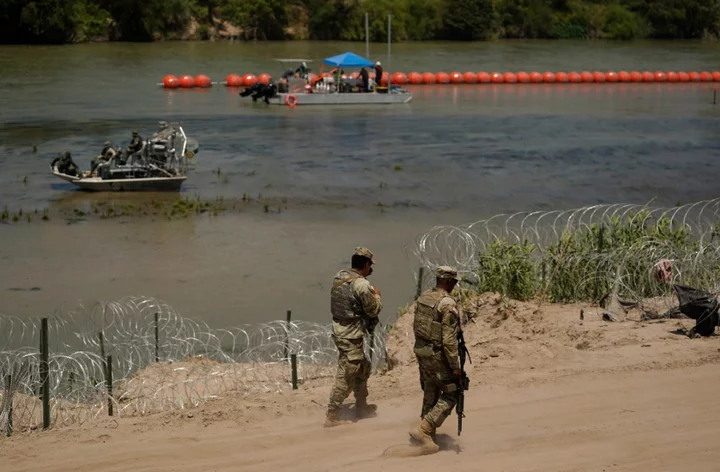
Biden sues Abbott over his floating border wall hours after he taunted president that he’d ‘see him in court’
The Department of Justice filed a civil lawsuit against the state of Texas on Monday over Governor Greg Abbott’s decision to install a 1,000-foot floating border barrier in the Rio Grande River near the city of Eagle Pass. “We allege that Texas has flouted federal law by installing a barrier in the Rio Grande without obtaining the required federal authorization,” Associate Attorney General Vanita Gupta said in a statement. “This floating barrier poses threats to navigation and public safety and presents humanitarian concerns,” the official added. “Additionally, the presence of the floating barrier has prompted diplomatic protests by Mexico and risks damaging US foreign policy.” The DoJ accused Texas of violating the Rivers and Harbors Act. The Texas project is also facing a lawsuit in state court over the buoy barrier. Last week, the federal government warned Texas it was considering taking legal action. On Monday, the Texas governor wrote a letter to the White House saying he intends to fight the DoJ’s lawsuit. “Texas will see you in court, Mr President,” the Republican governor wrote, adding, “All of this is happening because you have violated your constitutional obligation to defend the States against invasion through faithful execution of federal laws.” White House spokesperson Abdullah Hasan told The Independent that the governor’s plan isn’t effectively combatting unauthorised immigration. “Governor Abbott’s dangerous and unlawful actions are undermining that effective plan, making it hard for the men and women of Border Patrol to do their jobs of securing the border, and putting migrants and border agents in danger,” he said in a statement. “If Governor Abbott truly wanted to drive toward real solutions, he’d be asking his Republican colleagues in Congress why they voted against President Biden’s request to increase funding for the Department of Homeland Security and why they’re blocking the comprehensive immigration reform and border security measures that would finally fix our broken immigration system.” In mid-July, Texas neared completion of a $1m, 1,000-foot wall of buoys and netting across the Rio Grande, claiming it would deter illegal immigration outside of ports of entry. The effort has proved extremely controversial. In addition to warnings from the federal government, Mexico said it is investigating whether the wall violates international treaties surrounding the border. The governor has also been sued by a local man named Jessie Fuentes, who argues the state has deprived him of his livelihood as a kayak guide and is acting outside of its authority over an international boundary line. “You’ve taken a beautiful waterway and you’ve converted it into a war zone,” Mr Fuentes recently told The Independent. Migrant advocates and even some Texas troopers working on the governor’s Operation Lone Star mission at the border warn that the barriers are increasing unnecessary danger to human life. “It’s been proven time after time that these so-called prevention through deterrence strategies don’t work,” Fernando García of the Border Network for Human Rights told The Independent. “They have not stopped immigration flows, but what they have done is they have put immigrants at risk.” In a series of emails shared with news outlets including The Independent, a border medic described questioning orders from superiors to push exhausted migrants back into the river and to refrain from giving them water if captured. “We were given orders to push the people back into the water to go to Mexico. We decided that this was not the correct thing to do. With the very real potential of exhausted people drowning,” the trooper wrote. The state has denied the orders took place. The DPS source also claimed in the span of one week in late June, a teen mother was trapped in razor wire at the border while having a miscarriage, a 15-year-old broke his leg as he tried to find a way around the deterrence buoys, and a man lacerated his leg while trying to rescue his child from razor wire placed on a buoy. This is a breaking news story and will be updated with new information. Read More Death, debt, and degradation: Trump’s border wall after four years Buoys, razor wire, and a Trump-y wall: How Greg Abbott turned the Rio Grande into an immigration ‘war zone’ Greg Abbott defies White House warning on floating Texas border wall: ‘See you in court, Mr President’ In a showdown Texas' floating border barrier, the governor tells Biden: `See you in court' Greg Abbott defies White House warning on floating floating barriers in Rio Grande Texas is using disaster declarations to install buoys and razor wire on the US-Mexico border
2023-07-25 05:27
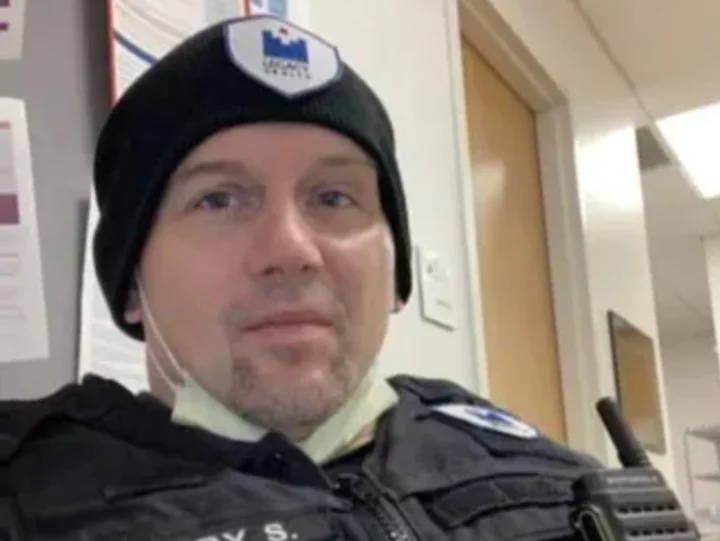
Hospital security guard fatally shot while on the job by suspect later killed by Portland police
An on-duty security guard was fatally shot at a hospital in Oregon by a suspect who was later killed by police. Forty-four-year-old Bobby Smallwood was working at the birthing centre of Legacy Good Samaritan Medical Center in Portland when the tragic events unfolded around 11am on Saturday. A suspect who has yet to be identified entered the building armed with a firearm and shot Smallwood and another hospital worker before fleeing the scene, according to the Portland Police Bureau. As terrified staff followed shelter-in-place protocols, Smallwood was transferred to a trauma facility, where he was pronounced dead. The second victim remains in stable condition, police said. Police said that officers responding to the scene set up a perimeter around the neighbourhood and attempted to locate the suspect. Officers also evacuated and searched a Fred Meyer after learning information that suggested the shooter may have been inside but he was not found. The suspect’s car was eventually traced to the city of Gresham, about 16 miles east of Portland. He was killed by law enforcement after his vehicle was stopped. The motive behind the shooting is still unclear. “During the incident, shots were fired by police. The suspect is deceased. No officers were injured,” a statement by the Portland Police Bureau read. On social media, coworkers remembered Smallwood as a devoted security guard. “I remember him fondly from his early days as a COVID screener in our building at Mt. Hood. What a sacrifice he made protecting others,” Elana Schaff, who worked with Smallwood at Legacy Mt Hood Medical Center, wrote in a Facebook post. “My heart is there with everyone who had to endure this insane situation.” Smallwood’s family has created a GoFundMe page to raise funds for funeral costs. Mr Smallwood’s father Walter Smallwood told The Oregonian that his son enjoyed being surrounded by children at the hospital and wasn’t fearful of his job, despite not being armed. “He loved children. Adults, he tolerated,” Mr Smallwood said. “He wasn’t [scared about the job]. I was.” Smallwood had initially done administrative and computer work at Legacy Health after graduating from Portland State University in 2020. His parents told Oregon Live that he had recently been promoted to a supervisory role. “This is a sad day for the staff at Legacy Health, and our hearts go out to the family, friends, and coworkers of the employees affected by today’s tragedy,” Chief Chuck Lovell, who responded to the scene, told The Associated Press. “By all accounts, hospital staff and law enforcement did great work responding to this incident, and I’m grateful for the coordinated efforts by all.” Kathryn Correia, Legacy Health president and CEO, also said in a statement: “Words cannot express the profound grief we are experiencing. “We offer our unwavering support to Bobby’s loved ones, to our patients in our care, to the staff at Legacy Good Samaritan and to all our employees and providers suffering today.” Read More Joe Biden is breaking his promise to end the federal death penalty Lauren Boebert blames her AirPods after she threw away photo of 10-year-old Uvalde victim Gunman who killed co-workers at New Zealand building site died from self-inflicted wound, police say
2023-07-25 03:51
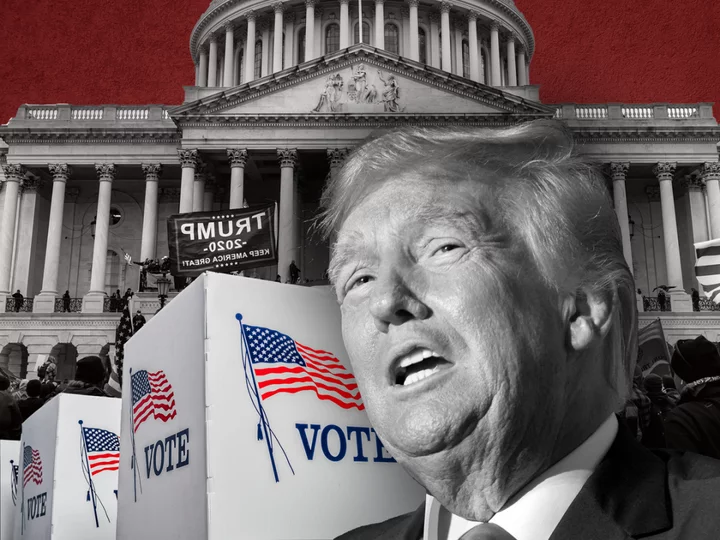
Trump, January 6 and a conspiracy to overturn the 2020 election: The federal investigation, explained
Indictments are imminently expected following a federal investigation into efforts from Donald Trump and his allies to subvert the outcome of the 2020 presidential election. The former president announced he received a target letter – a document formally indicating he is the subject of an investigation – in connection with a sprawling US Department of Justice special counsel probe into an alleged scheme to preserve Mr Trump’s presidency against the wills of millions of voters. A case will not likely be revealed in full until an indictment is unsealed in US District Court, but a wealth of evidence uncovered by members of Congress and in other documents suggests that the former president and potential co-defendants could be prosecuted in what would be a second round of federal charges against him. A House select committee spent a year and a half investigating the events surrounding and leading up to the attack on the US Capitol on 6 January, 2021, including a series of blockbuster public hearings laying out evidence and witness testimony describing the depth of Mr Trump’s attempts to remain in office at whatever cost. The panel’s final 845-page report provides a detailed account of Mr Trump’s refusal to cede power – regardless of the outcome of a democratic election – while privately acknowledging that he lost, as his baseless “stolen election” narrative fuelled his supporters to riot in the halls of Congress, an argument that also bolstered his second impeachment in the House of Representatives. In December, lawmakers on the House committee unanimously voted to recommend charges against the former president, claiming that there is enough evidence to prosecute him for at least four crimes – including aiding or providing comfort to an insurrection aimed at toppling the United States government. The panel also referred Mr Trump to the Justice Department for the obstruction of an official proceeding, conspiracy to defraud the US, and conspiracy to make a false statement to the federal government. John Eastman, the attorney who argued that Mr Pence could reject election results, and Kenneth Chesebro, who helped develop the fake elector scheme, were also implicated in the committee’s report, along with former White House chief of staff Mark Meadows, attorney Rudy Giuliani, and former assistant US Attorney General Jeffrey Clark. It was a mostly symbolic vote, marking the culmination of the committee’s months-long investigation, but it sent a powerful signal from a bipartisan group of lawmakers bolstered by mountains of evidence that a former president should be held accountable for his alleged crimes against the government. That report and countless investigations into the events surrounding January 6 have painted the attack on the Capitol as part of a much-larger effort to preserve a fragile American democracy in a volatile battle to determine the truth and who wields it. Who is under investigation? The Justice Department, meanwhile, had separately been investigating Mr Trump’s rejection of 2020 results, building on the years of work from federal prosecutors to investigate more than 1,000 people in connection with the January 6 attack on the US Capitol, fuelled by the former president’s ongoing false claims that the election was rigged against him. Prosecutors have talked to a number of chief aides and officials in Mr Trump’s circle, including Mr Pence, White House chief of staff Mark Meadows, former attorney Rudy Giuliani, former White House counsel Pat Cipollone, his former deputy Pat Philbin, and former National Security Adviser Robert O’Brien, among several others. They also have spoken with Georgia Secretary of State Brad Raffensperger, who was on the other end of a call with Mr Trump demanding that the state’s top elections official “find 11,780 votes” – enough for him to overturn Mr Biden’s victory in the state. That call, which was taped, also is at the centre of a separate investigation from Fulton County District Attorney Fani Willis into election interference in the state. Arizona – ground zero for an election denialism movement that gave rise to leading GOP candidates for the top three statewide offices, including failed candidate for governor Kari Lake – was a focal point for the Trump campaign and his allies, who filed several lawsuits against the state and some counties in an attempt to overturn the lawful results. Mr Biden won the state by roughly 10,000 votes. Federal prosecutors have talked to former Arizona Governor Doug Ducey, who silenced a call from Mr Trump while Mr Ducey was in the middle of certifying his state’s election results – a process that was being live-streamed and carried across news outlets. Mr Smith’s office also subpoenaed the office of Arizona Secretary of State and has met with top elections officials in Wisconsin, New Mexico and Pennsylvania. Prosecutors also have interviewed Michigan Secretary of State Jocelyn Benson, whose office provided a tranche of documents that included communications between the state’s election officials and Mr Trump’s former lawyers and members of his campaign as the former president’s allies targeted the critical battleground state. Central to the investigation is whether Mr Trump knew that he lost but pressed ahead with spurious efforts to overturn results anyway, with federal prosecutors reportedly speaking to his son-in-law and former adviser Jared Kushner and former communications directors Hope Hicks and Alyssa Farah Griffin with those questions in mind. What charges could prosecutors bring against Trump? Based on evidence uncovered by the select committee and other filings and reporting, prosecutors are likely investigating several key elements of the sprawling effort to reverse the 2020 election: Mr Trump’s lies about the outcome, his campaign’s attempts to pressure state officials and push false slates of electors to obstruct the certification of the results, a failed attempt to persuade Mr Pence to refuse the outcome, and Mr Trump’s failure to stop a mob of his supporters from breaking into the Capitol. Mr Trump knew he had lost the election but continued to pursue efforts to remain in power, including the so-called alternate elector scheme to fraudulently certify the results submitted to Congress, prosecutors are likely to argue. On 18 July, Michigan attorney general Dana Nessel charged 16 “fake” electors in that state, marking the first criminal charges brought against so-called “alternate” electors who sought to overturn 2020 results. Charges against Mr Trump and others connected to those allegations and similar attempts in other states could include conspiracy to defraud the United States in the administration of elections, the obstruction of an official proceeding, and wire and mail fraud. Obstruction The target letter from federal prosecutors to Mr Trump cites three statutes that the former president likely violated in his attempts to reverse the outcome of the 2020 election. One charge – obstruction of an official proceeding – has already been brought against hundreds of people in connection with the Capitol attack. The House select committee and a federal judge who was involved in cases stemming from its inquiry argued that there is evidence that Mr Trump sought to corruptly obstruct the certification of electoral college votes in Congress – a crime punishable up to 20 years in prison, if convicted. Conspiracy That same federal judge and the House select committee also have argued that there is evidence to convict Mr Trump on a charge of conspiracy to defraud the government, which is punishable by up to five years in prison. Mr Trump’s efforts through his legal team and his inner circle to block the certification of Mr Biden’svictory in states that he lost, while falsely claiming widespread voter fraud and manipulation had stolen the election from him, would likely form the basis for that charge. The former president also is charged under this statute in the Mar-a-Lago documents case, where he is accused of using a lawyer to lie to the Justice Department. “The illegality of the plan was obvious,” California Judge David O Carer wrote in a ruling from a civil lawsuit involving John Eastman, who was central to the so-called “alternate” electors scheme. Mr Trump, ignoring the nation’s history of the peaceful transition of power, “vigorously campaigned for the vice president to single-handedly determine the results of the 2020 election,” the judge wrote. Fraud The special counsel investigation suggests that prosecutors are scrutinizing Mr Trump’s vast fundraising arm and the tens of millions of dollars it raised after pleas to supporters for donations to combat election fraud, despite no evidence to defend those claims. In May 2020, with the presidential election still months away, Mr Trump said it would be “rigged” against him if he were to lose. That June, he said the election would be the “scandal of our times”, called it “inaccurate and fraudulent” and the “greatest election disaster in history”. Not a single ballot had yet been cast. His own Justice Department and campaign found no evidence of widespread voter fraud, and dozens of lawsuits filed by his campaign and allies to overturn results were withdrawn or dismissed, while his attorneys and the right-wing network amplifying their false claims face massive defamation lawsuits from the voting machines companies and election workers at the center of them. Lawmakers on the House select committee argued that Mr Trump’s campaign “misled donors as to where their funds would go and what they would be used for,” US Rep Zoe Lofgren said during hearings. “So not only was there the ‘Big Lie,’” she said. “There was the ‘Big Rip-off.’” Is there a case for insurrection? After Mr Pence refused Mr Trump’s argument for his vice president to toss out the results, then-President Trump “went to his last resort: triggering an insurrection in the hope that it would throw Congress off course, delaying the transfer of power for the first time in American history,” according to legal experts at Just Security, outlining a model prosecution memorandum similar to what federal prosecutors would also likely be reviewing. And after delivering remarks to a rally of his supporters while a joint session of Congress convened to certify 2020 election results, a speech that allegedly incited his supporters to storm the Capitol, then-President Trump stood by for 187 minutes before he told them to go home. The House select committee unanimously agreed that Mr Trump should be charged for inciting an insurrection and giving aid or comfort to insurrectionists – a rare and severe charge that prosecutors will approach only with extreme caution, if they decide to prosecute at all. “We believe there is sufficient evidence to pursue it – as did the Select Committee in making a criminal referral of Trump under that statute – but prosecutors may make different choices,” experts at Just Security noted. A conviction on that charge mandates a sentence of up to 10 years in prison and would prohibit Mr Trump from holding office. None of the more than 1,000 people arrested in connection with the attack are facing this charge. What has Trump said about the probe? The former president has repeatedly characterised the multiple investigations against him, including the January 6 probe, as a politically motivated “hoax” and an attempt to “steal” the 2024 election from him. On 23 July, Mr Trump published several posts on his social network Truth Social, once again calling the special prosecutor “deranged”. He claimed that investigations into him were a “coordinated HOAX,” pointing to the probe into allegations of collusion between the Trump 2016 campaign and Russia. Mr Trump also went after President Joe Biden, claiming without providing evidence that he’s a “criminal” before going on to call him “the most corrupt and incompetent President in United States history”. “Get smart, Republicans, they are trying to steal the Election from you!” he wrote before referring to Democrats and federal and state prosecutors as “monsters” who are “destroying our country”. This story was initially published on 19 July and has been updated with developments Read More Trump news – live: Trump claims he’s ‘not frightened’ by Jan 6 target letter as potential indictment looms
2023-07-25 02:58

Greg Abbott defies White House warning on floating Texas border wall: ‘See you in court, Mr President’
Texas governor Greg Abbott says he will continue deploying floating border barriers in the Rio Grande River, despite a warning from the Justice Department last week it might sue the state for overstepping its jurisdiction. “Texas will see you in court, Mr President,” the Republican governor wrote in a letter Monday to President Biden, claiming the Democrat’s border policies left him “no other choice” but for Texas to build military-style defences along the US-Mexico border. “All of this is happening because you have violated your constitutional obligation to defend the States against invasion through faithful execution of federal laws,” Mr Abbott added. This is a breaking news story and will be updated with new information.
2023-07-25 02:51
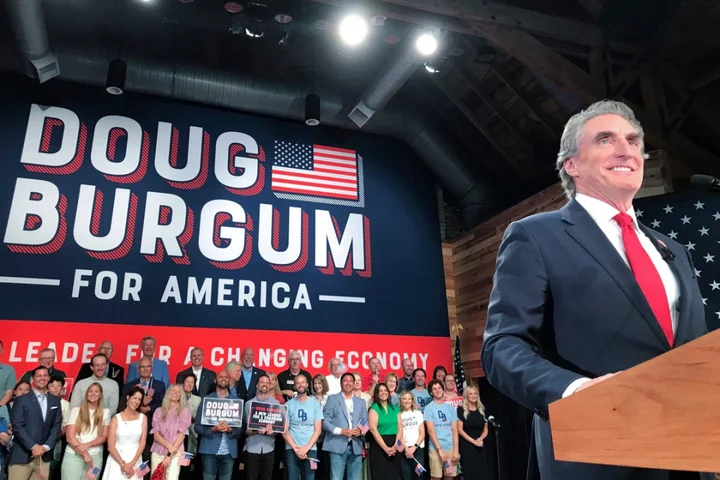
Biden supporters exploit Republican’s $1 donation cashback campaign pledge: ‘I gave $1 to you and $20 to Biden’
Republican presidential candidate and North Dakota Gov Doug Burgum is offering $20 gift cards to donors who give $1 to his campaign — but some supporters of Joe Biden say they have been funneling the gift card money to the president’s re-election campaign. Mr Burgum’s campaign site says: “Donate $1 and receive a $20 gift card!” The Republican candidate also took a direct hit at Mr Biden, “The burden on American families caused by the Democrats is unruly, and Joe Biden is doing nothing to fix it. We want to help, so we’re offering YOU a $20 gift card, and all YOU have to do is contribute $1 to claim it.” The gift cards are ironically called “Biden inflation relief gift cards.” However, some donors say they are taking advantage of the extra cash and sending it to the incumbent. One Twitter user wrote, “I gave @DougBurgum $1 so he would send me $20. Then I gave the $20 to @JoeBiden.” He attached photos of his donations. Another user tweeted that he “donated $1 to Doug Burgum and turned around and donated $20 to Joe Biden.” Yet another said, “Ok I gave him $1 and when my $20 gift card arrives I will give Biden-Harris a $19 contribution in honor of Doug Burgum.” “We passed the 40,000 mark today. We’ve got more gift cards to give out. We’re going to keep on going,” the North Dakota governor said, indicating he reached the unique donor threshold to qualify for the GOP presidential primary in August. Still, Fivethirtyeight shows Gov Burgum polling average at a mere 0.1 per cent. Former President Donald Trump is handily leading the Republican polls, with 51 per cent. Florida Gov Ron DeSantis is trailing him with only 18.9 per cent. Read More Joe Biden is breaking his promise to end the federal death penalty The presidential candidates who have so far met criteria to join first RNC debate Who is running for president in 2024?
2023-07-25 01:50

A Parkland father returned to the scene where his son died. He left with a bullet-torn poem and even more pain
As he prepared to write a eulogy for his 14-year-old son Alex’s funeral, Max Schachter found strength in a crumpled-up piece of paper the teen had discarded in the trash. “Life is like a roller coaster/ It has some ups and downs/ Sometimes you can take it slow or very fast/ It may be hard to breathe at times/ But you have to push yourself and keep going,” Alex wrote in his poem Life is Like a Rollercoaster. The powerful words became a precious keepsake of Alex’s wisdom beyond his years after he was fatally shot during class at Marjorie Stoneman Douglas High School in Parkland, Florida, on 14 February 2018. For years, the poem was a recurrent source of solace for the Schachter family; it was read by Mr Schachter as he addressed members of government early on in the tragedy, it helped the Schachters navigate never-ending waves of grief as time passed and it was also read last year by Alex’s older brother Ryan during his victim impact statement as a jury prepared to sentence Alex’s killer. Five years after the shooting that claimed 17 lives, staff hired by the school district found the final draft that Alex had turned in to his English teacher. They also found the lunchbox his parents packed for him every day and the binder with his schoolwork, but his backpack was placed inside a box labelled “biohazard” that Mr Schachter hasn’t opened yet. “[They] said, ‘I want to just tell you something ... there was a bullet that went through the poem, and I was just trying to process that this is just really painful,” Mr Schachter recounted to The Independent. “They had his belongings ... and then they gave it to me in a box with tape all around it and I asked, ‘What’s with all of this?’ They said it was because either it had a bullet shot through or there was blood on it. I took it home with every intention of opening it, but it’s hard.” “Looking at this journey that I’m on along with the other sixteen families – it’s just brutal. It never ends.” In the aftermath of the school shooting, the hard decisions have continued to pour in. Families of the Parkland shooting victims have been given the option to tour the preserved crime scene where Nicholas Cruz, a former student at the school, ambushed classrooms and indiscriminately shot at more than 34 people. The building was preserved as evidence for Cruz’s penalty trial last year. After the prosecution rested its case in August 2022, jurors retraced the path of violence. The state hoped that seeing the crime scene in person would convince them that Cruz deserved the death penalty, but jurors couldn’t unanimously agree. Cruz was ultimately sentenced to life in prison in November. “I wanted to walk through that building, [for it] to help me crystallise what had happened,” Mr Schachter said. “I wanted to understand what happened to Alex and I wanted to sit in that chair. I wanted to take that chair home with me, that was the chair that Alex took his last breath in.” Inside Alex’s classroom, Mr Schachter found what he described as a “war zone” – the harrowing evidence of the horrors that his son and his classmates endured. And with everything surrounding the carnage, the details continue to be as horrific all these years later as they were on that tragic day. “As I got there, I realised how he killed everyone and was so brutal and what he did to Alex,” Mr Schachter told The Independent. “There was blood all over Alex’s seat and all over the floor and his paperwork had blood on it.” There were also subtle hints of the sudden way in which hundreds of lives were changed that Valentine’s Day. The scattered textbooks, boards with lesson plans that were never taught, Valentine’s cards that were never delivered to their recipients and deflated balloons have become a painful reminder of the passage of time. Mr Schachter wasn’t trying to find closure when he walked inside the building where his son was murdered. But he was hoping to feel closer to Alex. However, the decision to open a box that may contain more fuel for nightmares is one he is not ready to make just yet. “I’m understanding that there might be more harm than good. There might be more negatives than positives from opening that box,” he said. “I haven’t made a decision on the box, but I am cognisant of the fact that it’s going to be very painful and I’m not sure if I’m ready for that.” Mr Schachter has turned his pain into purpose through his nonprofit Safe Schools for Alex, which assists parents, students and school districts with resources to make schools safer. It provides training in threat assessments and school safety best practices. The charity is currently fundraising money in honour of what would have been Alex’s 20th birthday on 9 July. Mr Schachter was also part of the Marjory Stoneman Douglas High School Public Safety Commission, which investigated failures before and after the shooting and then presented recommendations. “I travel around the country and I speak with law enforcement organisations, with school districts about what happened in Parkland,” Mr Schachter said. “I talk about the failures. I talk about what Florida’s done post-Parkland.” Under the Trump administration, a bill named after Alex and his friend Luke Hoyer, who also died in the Parkland shooting, led to the creation of SchoolSafety.gov, a federal website that compiles tools and actionable recommendations to create safer environments in K-12 schools, including resources for bullying as well as active shooting drills. The website was incorporated into President Biden’s Bipartisan Safer Communities Act last year. “The reason I do what I do is because there’s so much complacency. [No one] thinks it’s going to happen to them, so that’s why I go around the country and I tell Alex’s story and I show pictures and videos of him playing the trombone and the baritone because I never thought it would happen in Parkland,” Mr Schachter told The Independent. “I moved to Parkland because it was ranked the safest city in Florida right before the shooting, but it can happen everywhere.” The victims wounded in the Parkland shooting and their loved ones will also be able to visit the 1200 building at Marjory Stoneman Douglas High School, now that it is no longer needed as evidence in the trials of the convicted killer and a deputy who was acquitted last month of failing to stop him. The school district plans to demolish the three-story building, likely replacing it with a memorial. Read More Seven murders by cyanide-laced Tylenol will never be solved. But the prime suspect’s death brings justice The Zodiac Killer claimed responsibility for 37 murders. But what if he never existed at all?
2023-07-24 21:26
